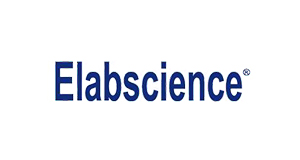Recombinant Rat IL-5 protein (His tag)
Recombinant Rat IL-5 protein (His tag)
SKU
ELSPDMR100026-100
Packaging Unit
100 µg
Manufacturer
Elabscience Biotechnology
Availability:
loading...
Price is loading...
Abbreviation: IL-5
Target Synonym: Interleukin-5;IL-5;B-cell growth factor II;BCGF-II;Cytotoxic T-lymphocyte inducer;Eosinophil differentiation factor;T-cell replacing factor;TRF;Il5
Target Species: Rat
Expression Host: HEK293 Cells
Fusion Tag: C-His
UNIProt ID: Q08125
Background: Interleukin 5 (IL-5) is a member of the interleukin family. Interleukins are a group of cytokines (secreted proteins/signaling molecules) that were first seen to be expressed by white blood cells (leukocytes) and has been found in a wide variety of body cells. Interleukin 5 or IL-5 is produced by T helper-2 cells and mast cells. It helps to stimulate B cell growth and increase immunoglobulin secretion and is considered a key mediator in eosinophil activation. Interleukin 5 (IL-5) has long been associated with several allergic diseases, including allergic rhinitis and asthma. Growth in the number of circulating, airway tissue, and induced sputum eosinophils have been observed in patients with these diseases. IL-5 also had something with the terminally differentiated granulocyte eosinophils. IL-5 was originally found as an eosinophil colony-stimulating factor. It has been proved to be a major regulator of eosinophil accumulation in tissues and can modulate eosinophil behavior at every stage from maturation to survival.
Sequence: Met1-Val132
Purity: > 95 % as determined by reducing SDS-PAGE.
Formulation: Lyophilized from sterile PBS, pH 7.4.
Normally 5 % - 8 % trehalose, mannitol and 0.01% Tween80 are added as protectants before lyophilization.
Please refer to the specific buffer information in the printed manual.
Endotoxin: Please contact us for more information.
Target Synonym: Interleukin-5;IL-5;B-cell growth factor II;BCGF-II;Cytotoxic T-lymphocyte inducer;Eosinophil differentiation factor;T-cell replacing factor;TRF;Il5
Target Species: Rat
Expression Host: HEK293 Cells
Fusion Tag: C-His
UNIProt ID: Q08125
Background: Interleukin 5 (IL-5) is a member of the interleukin family. Interleukins are a group of cytokines (secreted proteins/signaling molecules) that were first seen to be expressed by white blood cells (leukocytes) and has been found in a wide variety of body cells. Interleukin 5 or IL-5 is produced by T helper-2 cells and mast cells. It helps to stimulate B cell growth and increase immunoglobulin secretion and is considered a key mediator in eosinophil activation. Interleukin 5 (IL-5) has long been associated with several allergic diseases, including allergic rhinitis and asthma. Growth in the number of circulating, airway tissue, and induced sputum eosinophils have been observed in patients with these diseases. IL-5 also had something with the terminally differentiated granulocyte eosinophils. IL-5 was originally found as an eosinophil colony-stimulating factor. It has been proved to be a major regulator of eosinophil accumulation in tissues and can modulate eosinophil behavior at every stage from maturation to survival.
Sequence: Met1-Val132
Purity: > 95 % as determined by reducing SDS-PAGE.
Formulation: Lyophilized from sterile PBS, pH 7.4.
Normally 5 % - 8 % trehalose, mannitol and 0.01% Tween80 are added as protectants before lyophilization.
Please refer to the specific buffer information in the printed manual.
Endotoxin: Please contact us for more information.

 Deutsch
Deutsch










